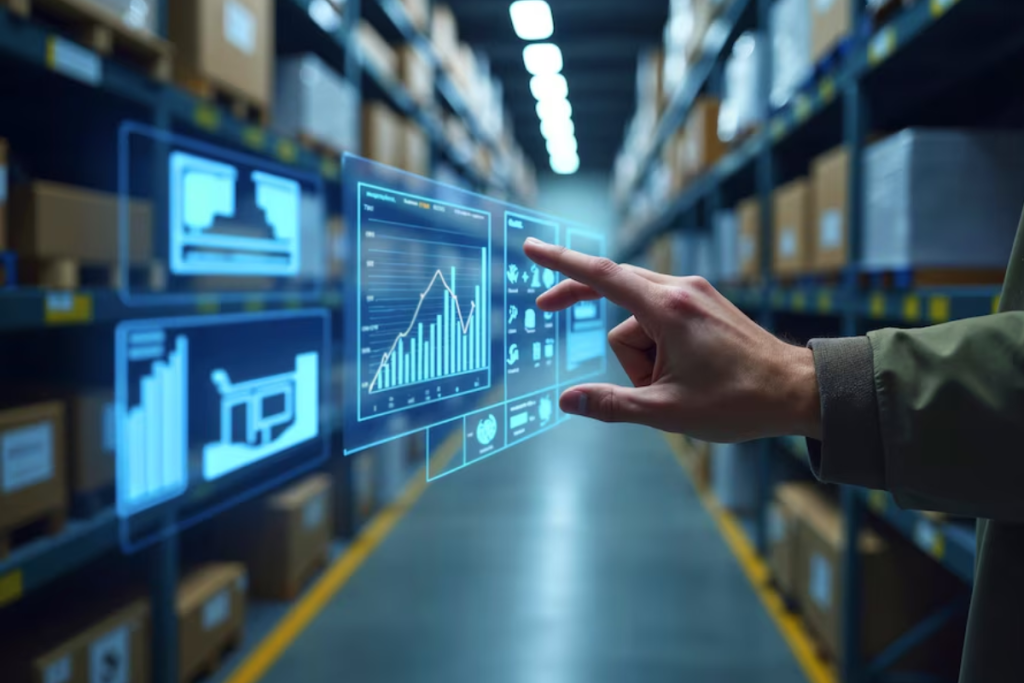AI-enabled digital twins are evolving from visibility tools into autonomous decision systems—reshaping how supply chain leaders manage complexity, anticipate disruption, and delegate operational control. As adoption deepens across OEMs, manufacturers, and logistics ecosystems, digital twins are beginning to influence the very structure of supply chain governance.
Rethinking Decision-Making
For many supply chain leaders, the challenge is no longer visibility, At’s decision overload. As global networks become more complex, the volume of micro-decisions around cost, risk, capacity, and compliance has exploded. From reacting to real-time disruptions to meeting ESG reporting obligations, leaders are being asked to do more, with less time and margin for error.
Adding to the pressure is a rising demand for structural agility. Volatility in supplier performance, shifting trade regulations, labor shortages, and fluctuating logistics costs mean traditional planning cycles are often outdated before they’re even executed. Leaders aren’t just managing supply chains, they’re managing uncertainty at scale.
Despite billions spent on control towers, dashboards, and planning software, one critical gap remains: the ability to simulate, test, and automate decisions with operational fidelity. This is where AI-enabled digital twins are beginning to deliver distinct strategic advantages.
Five Ways AI Digital Twins Are Delivering Strategic Impact
1. Redefining Cost-to-Serve in Real Time
Traditional cost models rarely reflect real-world variability in logistics, labor, or service levels. Supply chain leaders struggle to optimize network design or SKU strategy without granular, real-time cost data. AI-enabled digital twins can analyze cost-to-serve dynamically across SKUs, regions, and customer tiers. This enables leaders to adjust inventory, fulfillment modes, or supplier sourcing with full visibility into the margin impact of each decision.
Unilever recently implemented a digital twin solution to run real-time cost-to-serve simulations across its European markets. By integrating operational data from logistics, warehousing, and promotions, the company is using these insights to fine-tune its delivery strategy and reduce unnecessary supply chain complexity.
2. Embedding Risk Governance
As regulations tighten and geopolitical risks rise, managing compliance and risk exposure across multi-tier networks is no longer a quarterly exercise—it’s a continuous one. AI twins can proactively flag sourcing, compliance, or logistics risks—such as carbon thresholds, sanctions exposure, or single-source dependencies—and apply governance logic before a decision is made.
Airbus has operationalized this with an AI-enabled twin that ensures ITAR and export compliance during sourcing events. The system screens supplier location, product classification, and policy adherence before buyers commit, removing human error from a high-risk process.
3. Augmenting Judgment with AI Co-Pilots
Supply chain executives are inundated with decisions that vary in complexity and urgency. Delegating low-risk decisions can free up time—but only if systems can be trusted. AI co-pilots embedded in digital twins assist decision-makers by simulating options, recommending next actions, and automating routine workflows—based on real-time operational data and business rules.
General Motors has deployed semantic AI-powered digital twins to simulate plant and supplier disruptions across its North American operations. Planners can interact with the system through natural language prompts to assess alternatives and adjust plans dynamically.
For supply chain leaders, the opportunity here is scale. Rather than increasing headcount to manage growing complexity, they can embed decision logic into systems that act consistently, transparently, and in real time.
4. Synchronizing Supply Chain Ecosystems
Lack of shared visibility between supply chain partners leads to misaligned forecasts, late orders, and excess inventory across the ecosystem. AI twins enable synchronized planning by integrating live data from suppliers, logistics partners, and distribution centers into a shared virtual environment. This supports faster, aligned decision-making.
Dell Technologies, for example, has built digital twin infrastructure to coordinate across suppliers and logistics providers in real time. This allows it to adjust to demand shifts and supply disruptions with agility, while maintaining synchronized planning and fulfillment commitments across regions.
As AI twins grow more sophisticated, they also become neutral ground—offering a structured way to exchange data and make decisions without over-relying on manual coordination.
5. Stress-Testing Strategy Through Simulation
Scenario planning has traditionally been a slide-deck exercise—based on historical assumptions and simplified models. Digital twins make it operational. They replicate real-world behavior, allowing leaders to simulate demand spikes, supply shocks, or policy changes—and test responses within their actual operating framework.
For instance, BMW Group has applied digital twin simulations to assess the impact of sourcing risks tied to geopolitical tensions and regional disruptions. During the semiconductor shortage and subsequent Ukraine conflict, the company used digital twins to model various alternate supplier scenarios and assess lead time implications across multiple production sites.
These simulations helped the company rebalance component allocation and prioritize vehicle lines based on margin contribution and customer demand profiles.
Operational Clarity at Scale
The integration of AI-enabled digital twins marks a quiet but deliberate shift in how supply chain leaders operate and make decisions. As these systems mature, their role is becoming less about visibility alone and more about embedding structured intelligence into daily execution.
Whether it’s refining cost models, enforcing compliance, or scaling decision logic through co-pilots, digital twins offer a framework for operational consistency in increasingly variable environments. For supply chain leaders, digital twins present an opportunity to reframe core workflows, build governance into execution, and bring a new level of discipline to how decisions are made across distributed networks.




